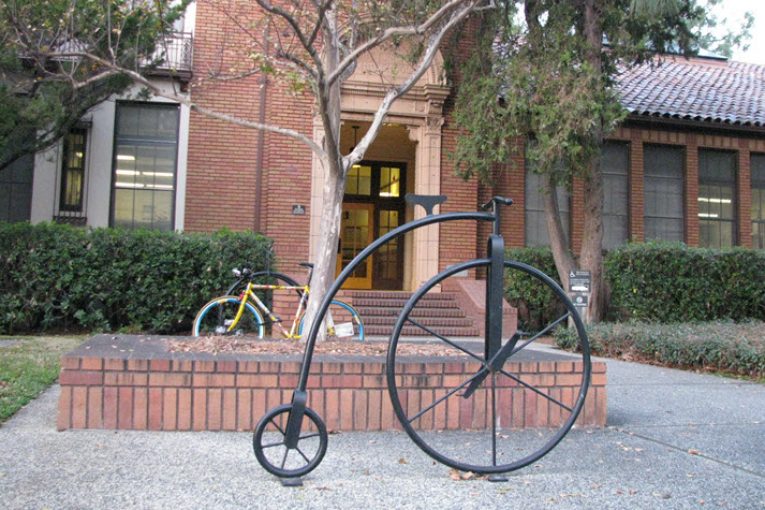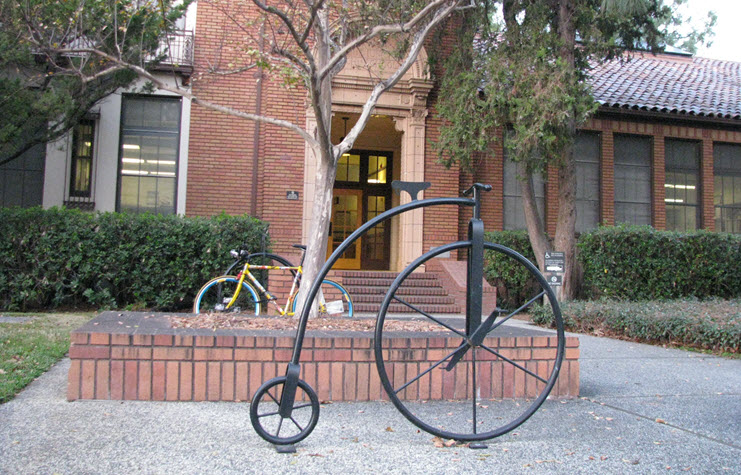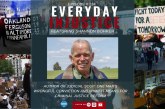

By Sean Brooks
The plan put forward by Mayor Chapman and Vice Mayor Vaitla to consolidate city advisory commissions is a necessary reform. In my personal experience as a founding (and now former) member of the Police Accountability Commission, I saw first hand how the status quo fails to provide the city with the timely expert advice and public engagement it desires. Reform is required to better take advantage of the local expertise with which Davis is blessed, but council must go further to provide a more holistic vision for improving the city’s advisory capacity.
The commissions as they stand are a poor vehicle for public and expert engagement. The proposed reforms will help by consolidating the number of commissions and more clearly delineating their scope, allowing city staff to more effectively support their work. But streamlining the commissions is not enough. If we accept that their limitations make them poor vehicles for public advisory, we need to envision new strategies for accomplishing that essential work.
The recommended reforms have drawn significant criticism. But ironically the controversy exemplifies the problems the council is trying to address. While those of us who are  city politics gadflies may have strong opinions, the role of commissions is not well-understood by the general public. This lack of public understanding means debates over process can be confused for debates of substance. This letter seeks to evaluate the latter based on my experience as a commissioner, my previous roles in advocacy and public service, and my academic research in open government and public policy.
city politics gadflies may have strong opinions, the role of commissions is not well-understood by the general public. This lack of public understanding means debates over process can be confused for debates of substance. This letter seeks to evaluate the latter based on my experience as a commissioner, my previous roles in advocacy and public service, and my academic research in open government and public policy.
When I evaluated the substance of the recommendations, I first considered what is currently asked of commissions. City commissions are public advisory groups, staffed by volunteers from the public and assigned city staff. They are designed to:
- Hold public meetings and use other means to gauge the community’s attitude about certain Issues;
- Recommend policies and procedures related to their respective fields to the City Council;
- Serve as intermediary between the public, city staff and the City Council by providing information, explanation, and support for different points of view; and
- Make, in certain cases, decisions for the city.
The existing commission structure faces multiple functional problems: sprawl, limitations of city staff resources, and unnecessary restraints created by state law. But commissions are also fundamentally exclusive – restraining opportunities for input into city policymaking to a privileged few, and locking out potential experts and the broader public. The reforms proposed by Mayor Chapman and Vice Mayor Vaitla deal with some of these problems, but not all.
When evaluating the effectiveness of the existing commission structure against the city’s goals, it is clear that they are incapable of delivering on the public engagement and intermediary roles set forth in goals 1 and 3. Any successes of the existing commissions (Police Accountability, HRC, and SSC for example) are in spite of the existing structure, and due more to the quality of their volunteers and the dedication of city staff. The proposed commission restructuring reflects a more realistic view of what these bodies are capable of, and less of what we might like to shoehorn into their remit.
Commissions limit true public engagement due to their sheer number, format, and scope size. The 18 commissions meet once a month. They are typically staffed by five to seven volunteers. Meetings usually start at 6:00pm or 7:00pm, and run from two hours to five hours long. This is one of the most fundamentally exclusive components of the commission function: the meetings are not possible for most residents to attend or serve on. The options here are limited, as having meetings during the day would also restrain who could attend. Commission meetings must also be staffed by city employees. That means our civil servants are working full days, then attending meetings (18 a month!) that can stretch well into the night (this does not include other evening public meetings like those of the City Council). As the father of two young children, I found the late nights frustrating, and that was only for a single commission. We can’t say that commissions meet our needs for public engagement when most of the public is not, and cannot, be involved.
The second issue is the unreasonable set of limitations on each commission’s ability to work.
The Brown Act states public advisory bodies like commissions must have a quorum to meet, and must take public comment on any item that is discussed. That seems reasonable, until you get into the details. In order to maintain quorum across the commissions, city staff and council must keep a cadre of nearly 100 volunteer commissioner seats filled. The city has also determined in its (rather conservative) interpretation of the Brown Act that commissioners cannot discuss items as a full body between meetings. This completely eliminates the ability of Commissioners to work collaboratively in a modern fashion using modern tools (like email or Google Docs – even those with a public-facing records or listserv). Subcommittees can work between meetings, but their work can only be presented to the full body in the monthly public forums. This means in the same, once-a-month meeting, Commissioners must hear information from Subcommittees (including detailed policy recommendations), manage public comment on those issues, and try to frame up joint recommendations. In my personal experience, the inability to collaborate efficiently with the public and my fellow commissioners was a serious barrier to getting work done in a timely fashion.
That’s where we stand now: eighteen bodies of volunteers meeting once a month in an attempt to cobble together the public’s perspective and their own (often expert) advice on critical issues including planning, transportation, police accountability, housing, and many other (occasionally overlapping) issues. The Brown Act restrains these bodies from true dialogue with the public (Commissioners are not allowed to respond to or discuss public comments provided, only hear them). Those of us who have served on commissions may point to specific actions that have improved the City – and to be sure, our commissions have many brilliant members in their service. But in my experience the work of commissions is crushingly slow and deeply frustrating, creating consistent churn in membership and disengagement from the public. The pace at which they can deliver input rarely aligns with the needs of the council or city.
In addition to streamlining the commissions, I have two specific recommendations:
With the time saved to support fewer commissions, the city should invest in staff training or permanent positions designed to facilitate more meaningful public comment. This can be done through forums, town halls, and through other methods of public dialogue. The council should also clearly articulate a plan for creating time-bound, volunteer Task Forces who rapidly produce recommendations for consideration by commissions and city council by working outside of commission constraints, engaging more directly with the public, and bringing their work to formal Brown Act-compliant meetings for review. Without these elements in place, the new commission structure risks duplicating the dysfunction of the current system.
Reform always contains risk, but the current scope of commissions’ responsibilities is unworkable. With some minor additions, I believe the proposed reforms will vastly improve the public’s ability to engage with our city’s governance.
Sean Brooks is a Former Member of the Police Accountability Commission






I wholeheartedly agree with the excellent ideas from Mr. Brooks. It really is not effective democracy if it is unmanageable and represents bureaucracy and sprawl run amonk. I didn’t realize that there are a staggering total of 18 commissions for a medium size city.
The current commission structure must be streamlined and opened up to more real public input. The Brown Act is California’s version of an open meeting law for local bodies. It helps ensure that official decisions are not made in secret. It requires citizen comment before such decisions are voted upon.
This is good reflection on what has become of our commissions. I can’t speak to who sat on the commissions when they were initially formed but when I first came in contact with them in a quarter century ago, they were populated with considerate professionals and City Staff leaned on them for work product. I twice wrote long reports on electricity issues that were used as policy guides. Another new commission developed an innovative water rate design (that was derided for its complex name by a local columnist–a victim of poor marketing). And a follow up commission designed a responsive fix to that rate design. That became the Utilities Commission. Two other joint commission committees recommended the formation of VCE and reassessing the use of enterprise fund reserves. The NRC then rewrote the residential and commercial building code in close cooperation with staff. A parking fee proposal was developed by a citizen committee although then set aside. The NRC and Tree Commission joined to rewrite in detail the moribund parking lot shade ordinance.
But then the City Staff chose to bypass the commissions on several critical decisions, at least one of which was a significant give away to a private party. The parking lot ordinance which had progressed quickly then stalled for more than four years and still hasn’t moved forward for two years when it was close to completion. And the staff chose exclude that ordinance from climate action plan (but to still include the parking fee proposal which won’t reduce GHG emissions and still doesn’t have public support.) Other proposals made by commissions on the CAP were ignored and other pet projects were still included even though all they do is scatter scarce resources. Staff planners ignored key proposals from commissions on new projects, sometimes revealing ignorance about certain sustainability issues. The Downtown Plan had tremendous input and innovative solutions but many of these blunted by a senior staff member (now departed) who seemed more interested in listening to myopic developers. The recent process for approving a significant wastewater utility rate redesign was another notch in the demise of the role of commissions.
Looking at this history, what I see is more productivity and success from purpose-built committees, joint and otherwise. These are often more organic and less constrained by legal niceties than standing commissions. The lack of authority in many cases, or least clear lines of responsibility, undermines the ability of commissions to be proactive.
I left the NRC after serving on that and the Utilities Commission for 9 years, along with several ad hoc and joint committees. I felt the frustration that Sean has. That I saw several members effectively silenced for dissenting from the staff positions also contributed to my disillusionment.
I found being on commissions has highly educational and I’m proud of the innovations that we created. I still would recommend any one new to the city or younger to participate, but you cannot go in now expecting to have a real impact, unlike a decade ago when we were asked by the public works director to look at options for delivering electricity in alternative ways.
So I think I’m leaning towards a solution derived from what Sean suggests: eliminate all of the commissions except those required by law, e.g., Planning, and instead create ad hoc committees as needed that can provide public and/or volunteer professional input. The Downtown Plan committee is a more recent example of how this can be effective and highly visible. If a commission is to be reconstituted, it must have a clear ongoing purpose beyond hearing annual staff update reports, and clear authority from the Council such as approval of utility rate increases. Just holding monthly meeting for form is a waste of everyone’s time–every meeting should be a working session with everyone coming prepared in some manner.